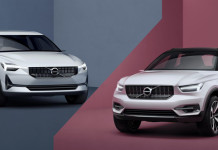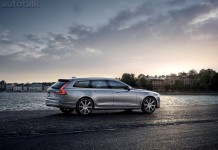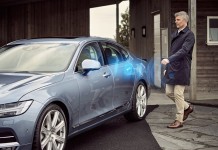As numerous consumer education campaigns surface to eliminate the dangers of distracted driving, Volvo Cars of North America (VCNA) invites other U.S. employers to join the movement by enacting stronger policies regarding the use of cell phones while driving.
VCNA has had strict safe-driving policies in place for its company cars for decades. These include mandatory use of seat belts for all occupants and hands-free devices for cellular phones while driving. Texting while driving is strictly prohibited for all Volvo employees while driving Volvo company cars.
“We invented the three-point seat belt, so it makes sense for Volvo to have employee policies for safe driving, but there is no reason other companies can’t strengthen current policies or implement new ones,” said Doug Speck, VCNA’s president and CEO. “Even if a very small percentage of employers bring attention to the issue of distracted driving, it could have a major impact on making our roadways safer.”
Volvo has posted its Safe Operation of Company Vehicles policy on its blog, http://www.volvoblog.us/ . “Feel free to copy it word for word and make it part of your company’s HR handbooks – the sooner the better,” added Speck.
According to the National Highway Traffic Safety Administration, in 2008, 5,870 people lost their lives and an estimated 515,000 people were injured in crashes in which at least one form of driver distraction was reported on the crash report. What’s more, these numbers represent only reported distractions, so the size of the problem is, much greater, concludes the NHTSA report.
In an effort to bring this safety issue to the forefront, Transportation Secretary Ray LaHood led a Distracted Driving Summit in Washington, D.C. in September 2009 that highlighted the under-recognized dangers of distracted driving. To further call attention to the issue, Volvo placed ads in USA Today and The Washington Post calling for distracted driving legislation.
Earlier this year, Secretary LaHood announced a federal ban on texting for commercial vehicles such as large trucks and buses.
Volvo’s director of safety, Thomas Broberg, also offers the following tips to eliminate as many distractions as possible:
- Don’t dial or text and drive. Let a passenger make a call for you, or wait until you’re parked to dial or send a text message.
- Pre-program important numbers into your phone. These will be readily available to you if you are in an accident.
- Change your ways and recognize the activities that distract you; such as eating, talking on the phone or changing a CD.
- Once you recognize these distractions, you can work to eliminate them.
- Know your route in advance and make sure that you have a good understanding of your directions. Check weather and road conditions.
- If you are transporting children, make sure that they are all properly buckled up and that you items to keep them occupied, such as books on tape or soft toys.
- Manage your time so that you do not have to multi-task or drive aggressively on the road.
- Understand that driving is not your “down time” or a time to catch up on phone calls, personal grooming or dining.
- Scan the road to make sure that you are aware of others on the road at all times. Be prepared for the unpredictability of others.
- Concentrate on your driving. Make sure that you are not upset or tired when getting on the road. This is not the time to have a serious or emotional conversation with your passengers.
- Pull over if you need to do something that will take your eyes and/or mind off of the road. Make sure that you find a safe place to pull over first.
- Buckle up, every trip, every time. Making sure that everyone is properly buckled up is the best defense against distracted drivers.











